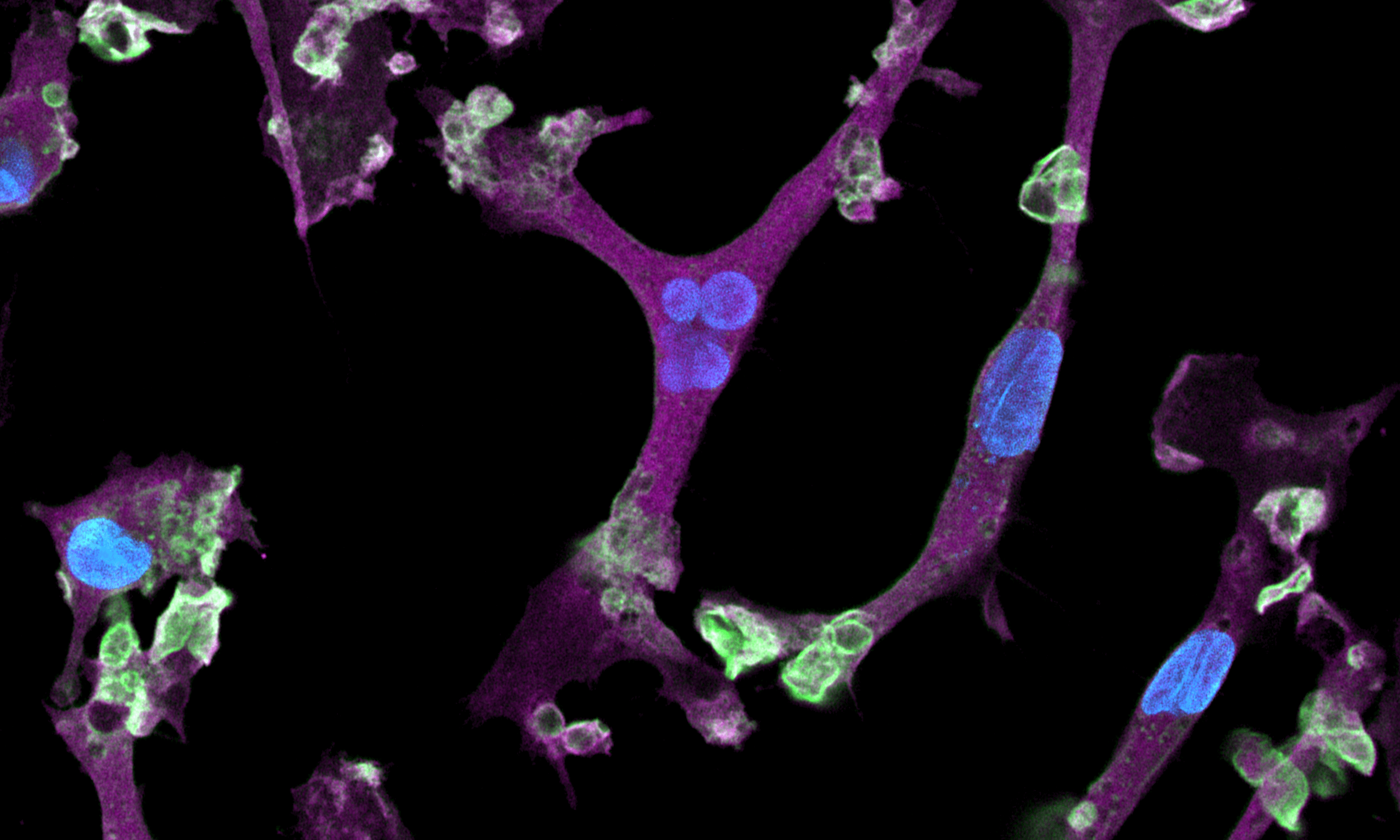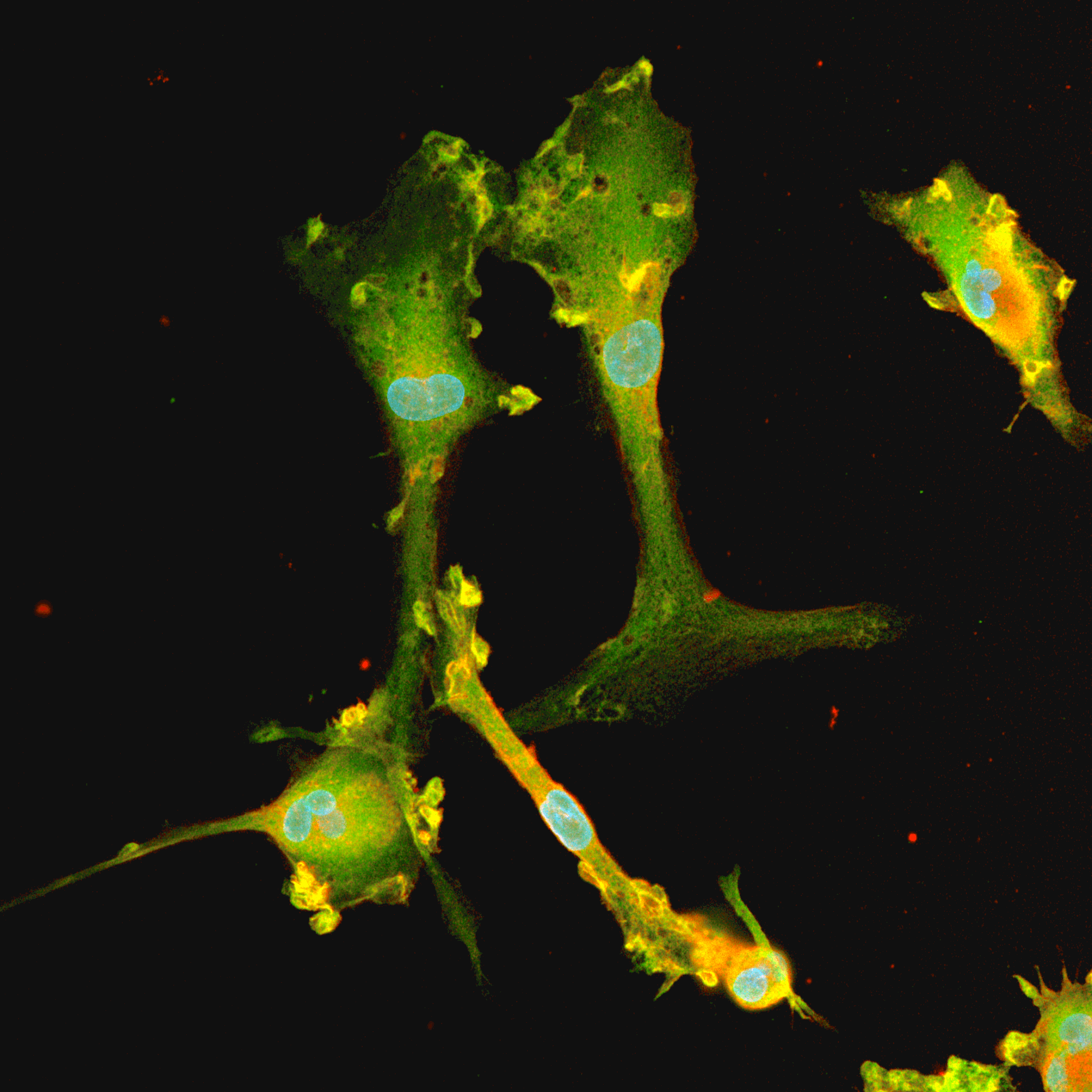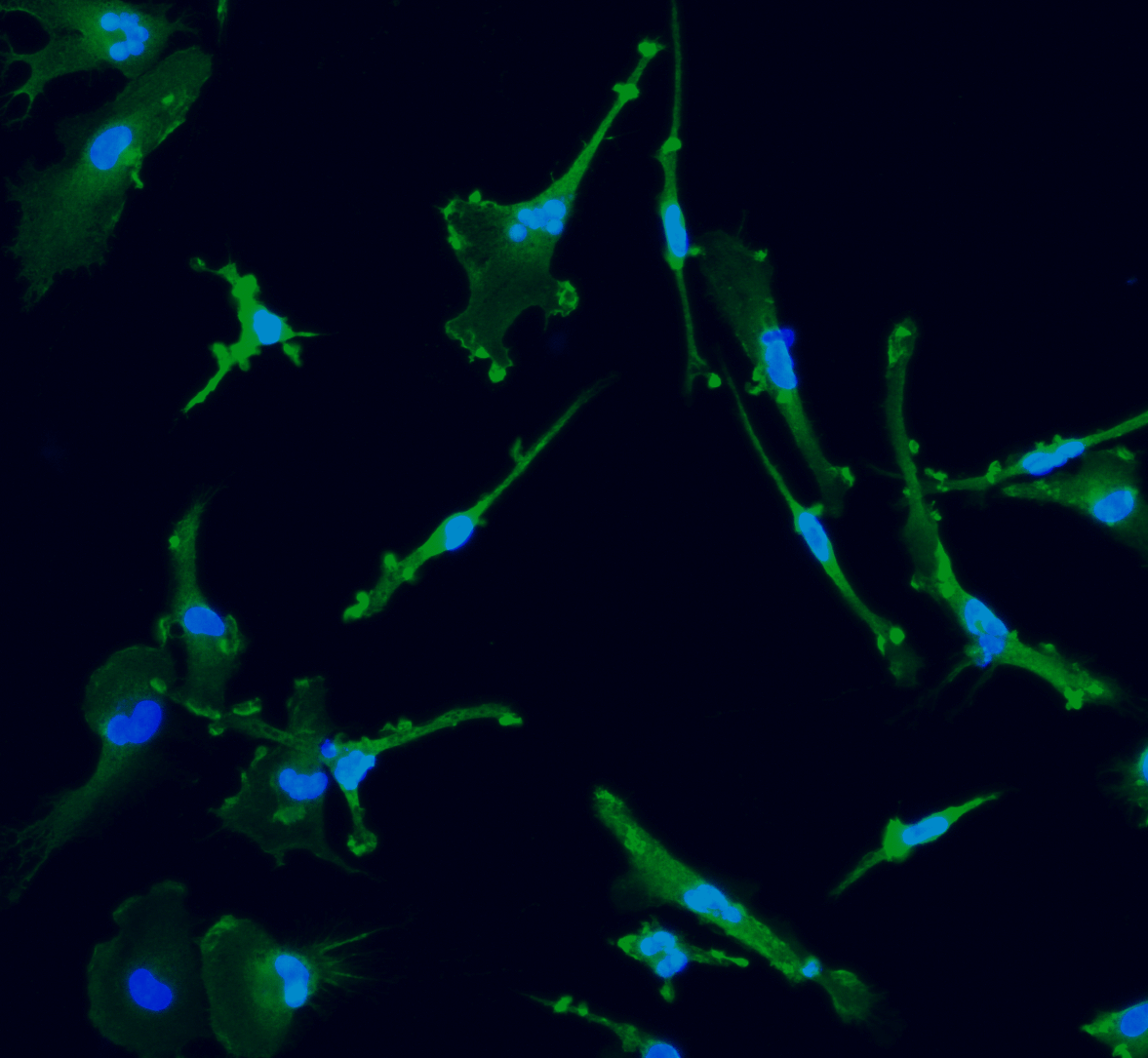Cell detachment protocol for human iPSC-derived microglia
Cell detachment protocol for human iPSC-derived microglia
Introduction
ioMicroglia are human induced pluripotent stem cell (iPSC)-derived microglia, deterministically programmed using opti-ox technology. Like all primary human microglia cells, ioMicroglia are adherent cells that form attachments to their surrounding environment. For many applications including flow cytometry, single cell RNAseq, and re-seeding for co-culture, microglia need to be detached from the plate. However, doing so is a delicate process and to ensure ioMicroglia remain viable, it is essential to perform gentle detachment from the culture dish.
Below we present two detachment protocols:
Detachment for re-seeding experiments such as plating for co-culture using gentle agitation and manual washing.
Detachment for single cell experiments such as flow cytometry and scRNAseq using Accutase®.


Materials and equipment
-
ioMicroglia cells (cat no: io1021) cultured for at least 24 hours post-thaw as per the user manual
-
Accutase
-
ioMicroglia basal medium – as described in the ioMicroglia user manual
-
15mL tubes
-
Phosphate Buffered Saline (PBS)
-
Biological safety cabinet
-
Standard tissue culture wares (pipettes, tips, culture plates)
-
Normoxic cell culture incubator (37°C, 5% CO2)
-
Bench top centrifuge
-
Brightfield microscope
Protocol overview - re-seeding experiments
Cell detachment protocol overview for re-seeding experiments such as establishing neuron-microglia co-cultures

Detachment protocol for re-seeding experiments
If detachment and reseeding of the ioMicroglia occurs on a feed day, first perform a half feed using ioMicroglia comp:MM2X prior to commencing the following detachment protocol.
1. After the ioMicroglia have been cultured for at least 24 hours post-thaw, use a micropipette to gently resuspend the cells within their existing media, using minimal pipetting and slow pipetting speed.
2. Transfer the resuspended cells to an appropriately labelled 15mL tube.
3. Using a brightfield microscope, check how many cells have been removed from the plate.
4. If cells still remain after step 3, add fresh ioMicroglia comp:MM1X to the well and repeat steps 1-3.
5. The suspended cells should counted and transferred directly to the new vessel for re-plating and further culturing, avoiding centrifugation where possible.
Protocol overview - single cell experiments
Detachment protocol for single cell experiments
1. After the ioMicroglia have been cultured for at least 24 hours post-thaw, gently aspirate all medium from wells, being careful not to dislodge any ioMicroglia from the surface of the plate.
2. Gently add Accutase to the culture vessel. We recommend using 10mL for each 95cm2 of the surface area outlined in the table below:
Table 1: Accutase volumes
|
Plate format |
Surface (cm2) |
mL/well |
Volume/well of basal medium to dilute |
|
6 well |
9.5 |
1 |
100µL |
|
12 well |
3.8 |
0.5 |
50µL |
|
24 well |
1.9 |
0.25 |
25µL |
3. Incubate the plate at 37°C for 8 minutes.
4. Using a brightfield microscope, check whether the cells are starting to dissociate from the surface of the plate. The microglia will start to lift off the plate when they are dissociating. If they are not detaching, return to the incubator for a further 2 minutes.
5. Once detached, use a micropipette to gently resuspend the cells in the Accutase solution. Transfer the resuspended cells to an appropriately labelled 15mL tube.
6. Dilute the Accutase and cell suspension with 10% ioMicroglia basal medium and mix gently, to neutralise the Accutase.
7. Centrifuge tubes at 330 xg for 4 minutes.
8. Remove the supernatant and resuspend the pellet in 200µL PBS.
9. The suspended cells should be promptly used for flow cytometry or other single cell experiments.
Technical support
If you have any questions or need assistance, please reach out to technical@bit.bio and we will do our best to support you.
Published March 2025, version 4




